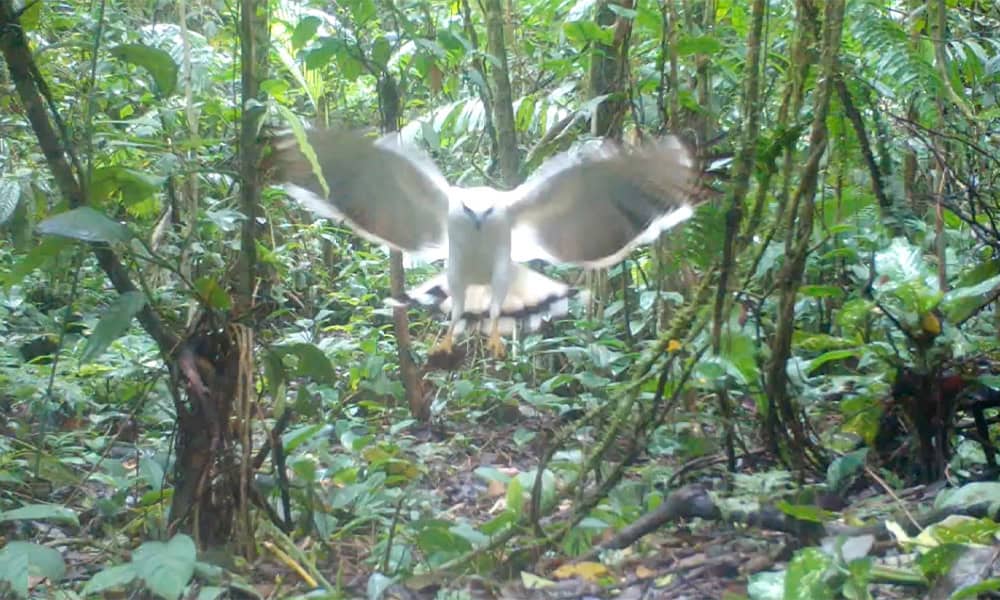Today’s featured avian creature is the White Hawk, a widespread, beautiful bird of prey whose life is still a bit of a mystery. The white hawk (Pseudastur albicollis) is called the gavilán blanco in Spanish. The English and Spanish names hit the nail on the head because the white hawk is indeed predominantly white.
The scientific name has changed over the years, which is common as techniques to study heredity evolve. My older bird book claims the scientific name is (Leucopternis albicollis) which is outdated. Currently four sub-species are recognized, the sub-species living in Costa Rica is fittingly named (Pseudastur albicollis costaricensis).
While several birds of prey in Costa Rica have white bellies, the white hawk stands out because it’s the only one with both a white belly and white back. The wings are white with contrasting black bands on the edges. The tail also has a black band. A mostly white bird doesn’t sound particularly remarkable, but it makes them stand out amongst raptors. Their white plumage also contrasts nicely with the dark foliage of the forest, so the sighting of one immediately evokes a ‘Wow!’ response from anyone even remotely interested in birds.
White hawks as a species have a very large range. They’re found from southern Mexico, throughout Central America, down to the entirety of the Amazon basin. Within Costa Rica, they live on the Caribbean slope, along the south Pacific coast, mostly south of Carara National Park, and they’re infrequently sighted on the southern tip of the Nicoya Peninsula. I recently spotted one while reviewing cameras in northern Guanacaste, an area that is outside of their recognized range.
The white hawk’s preferred habitat is forested areas with hilly terrain. They seem noticeably less numerous in flat forested areas. These birds hunt inside the forest canopy as well as along the edges of the forest. They are diurnal, hunting from a perch during the day. When prey is spotted, they swoop down upon it from above.
Other facts about the lives of white hawks are hard to come by. They’re known for their spectacular aerial courtship display, but I couldn’t find any information describing it nor any video footage. After a successful courtship, they construct a nest of twigs high in the trees, often among epiphytes.
In an effort to find more information about this little-known bird, I dove into the pages of scientific journals. What I found were the types of articles one usually finds when an animal isn’t well studied: articles about witnessing that creature hunt a species that nobody knew that they hunted. In the case of the white hawk which is generally known to feed on reptiles, small mammals, and large insects, there were articles about it hunting several species of birds, as well as fish, and an article about a camera trap recording one attacking a tamandua.
I see white hawks very infrequently in the wild, partially because I live outside of their regular range. Each time I catch a glimpse of one amongst the branches of the forest my heart sings just a little bit. I’ve recorded white hawks with my camera traps exactly twice. Once on a private farm in the northern zone of Costa Rica while working with Fondo de Biodiversidad Sostenible and another time very recently perched on a fallen log on a private farm called Finca Bella Vida near Pérez Zeledón. I’m happy to share those clips with you in the video below.
About the Author
Vincent Losasso, founder of Guanacaste Wildlife Monitoring, is a biologist who works with camera traps throughout Costa Rica. Learn more about his projects on facebook or instagram. You can also email him at: vincent@guanacastewildlifemonitoring.com

